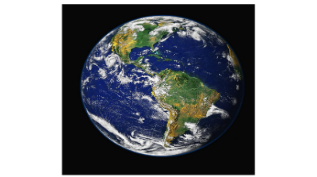Letting Kids Decide What it Means to Be “Green”

Teaching children the importance of helping others and taking care of the world around them is an essential part of building character. It is also important to encourage children to think about what they want to do to make the world a better place so they can truly understand the power of their actions.

Messages about being “green” are everywhere these days, but most of these discussions and the actions being suggested are for adults. Based off of the approach in my book, The Greening Book: Being a Friend to Planet Earth, I think we can let children think about what they get from the earth and, in turn, what they want to do to give back to the planet to make a difference and be “green.”
- Teach by Listening
There are endless reasons we could give children for being environmental, but it is even more powerful to start the discussion and let them express the things they appreciate about the earth and the gifts they want to protect. You can start this dialogue by sharing some of your favorite places in nature and things you get from our planet. Then encourage them to think about and share their own personal reasons for taking care of the environment. - Capture the Reasons
Children’s exploration of the environment and being “green” is part of a larger journey toward being caring, responsible citizens. One way to guide that course is to help them remember the reasons they want to nurture and protect the earth. Encourage children to capture their feelings about the earth and its living creatures by journaling, drawing pictures, taking photographs or creating scrapbooks. The Greening Book also allows children to make a record of their hopes and dreams for the earth and what they plan to do to make it a better place. -
Encourage Kid-Friendly Contributions
It’s great to give kids examples of how we can share the energy by making adult decisions, but it is more fun and engaging if there are also tasks they can do start to finish. Examples would be cleaning up litter at a local park, turning off the lights in their bedroom, writing letters to politicians or community leaders about an environmental issue, or making crafts that encourage others to take care of our planet. -
Lead by Example
Once children start thinking about the importance of taking care of the earth, they will be watching to see how your behavior reflects these values. Make sure you are being thoughtful and responsible in your actions, and draw attention to things your household does to give back and take care of the environment. -
The More, The Merrier
Environmental issues create a great opportunity for group activities. Encourage children to work with others in their neighborhoods, schools and communities, on projects and activities that help Planet Earth. The Greening Book has many activities that children can do together and there is a free Greening Party Guide that gives tips and ideas for planning a kid-friendly event – in an afterschool program, youth-focused organization, or even in your home- that makes being “green” tons of fun. There’s also a free Teacher’s Guide on the site for those schools and educators looking for ways to integrate environmental lessons into classrooms during Earth Day and throughout the school year. -
Use your voice
If you are committed to inspiring the next generation of environmental thinkers, one fun way for you to spread the word is to host a reading event in your local community school, library, or other settings. Reading events invite fun, interactive conversations that allow you to champion your environmental passion while igniting kids to participate in finding their own voices throughout a guided journey. Check out the link to help you host a reading event. -
And, a word on impact investing
Children are not too young to learn about the power of money. In age-appropriate ways, you can explain how people can choose to invest (grow) their money in ways that are consistent with their values and missions. This conversation will help budding environmentalists and budding philanthropists to begin to weave together the various actions they can take as they seek to be kind to planet earth.

